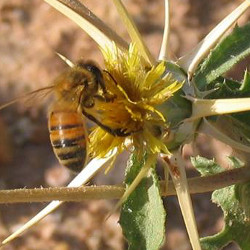Using AI to control energy for indoor agriculture
30 September 2024
Published online 28 August 2014

© Nizar Haddad
The team, which included Nizar Haddad, director of the bee research department at the National Center for Agricultural Research and Extension in Jordan, sequenced the genomes of 140 honeybees from 14 populations spread around the world. By comparing the genomes, they identified differences at over 8 million positions.
“Amongst these positions may be specific differences that make African bees more resistant to Varroa, although we don't know which ones those are yet,” says Matthew Webster, who led the study. Identifying those differences could help produce Varroa-resistant European and North American bees, which would be a major step in fighting colony decline.
The researchers analysed the genetic variations to elucidate honeybees' evolutionary history, showing that the species probably traces its roots back to Asia, not Africa. They also found that the Jordanian sample, the Syrian bee, derived around 18% of its ancestry from African bees, which may be a cause for concern given the more aggressive tendencies of African bees and the problems posed by their hybridization in North and South America.
doi:10.1038/nmiddleeast.2014.208
Stay connected: